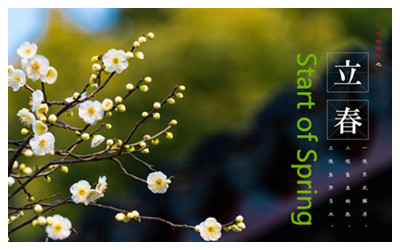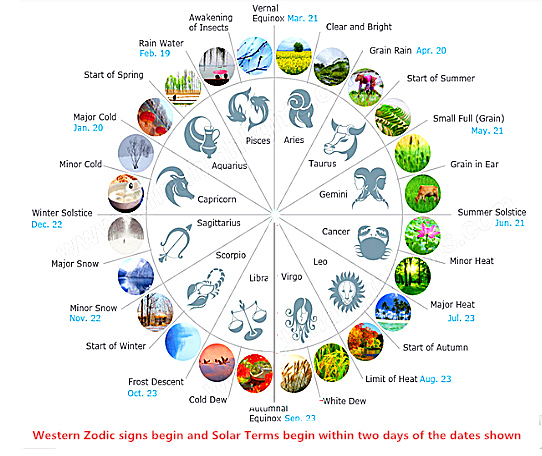Skype: neodalle-travel
Tel: +86 135 7447 2266
E-mail: sales@visitaroundchina.com

China's 24 Solar Terms is a deeply rooted concept that encapsulates the essence of Chinese wisdom. Now, they are coming alive. Shi Changhong, a designer in Southwest China's Guizhou province, has re-produced and packaged the character, meaning and elements of each solar term into "moving art" in the form of GIFs."I hope that the public can get a better understanding of the 24 Solar Terms in a more plain and straight-forward way through my art and grasp the beauty of traditional Chinese culture," Shi said.
 Chinese months follow the phases of the moon. The solar-based agricultural calendar is made up of twenty-four points called jieqi. They are essentially seasonal markers to help farmers decide when to plant or harvest crops, as the lunisolar calendar is for obvious reasons unreliable in this respect.
Chinese months follow the phases of the moon. The solar-based agricultural calendar is made up of twenty-four points called jieqi. They are essentially seasonal markers to help farmers decide when to plant or harvest crops, as the lunisolar calendar is for obvious reasons unreliable in this respect.

| M | Ecliptic Long. |
Chinese Name | Gregorian Date (approx.) |
Usual Translation |
Remarks |
| 315° | lichun | 4 February | start of spring | spring starts here according to the Chinese definition of a season | |
| 1 | 330° | yushui | 19 February | rain water | starting at this point, the temperature makes rain more likely than snow |
| 345° | qizhe | 5 March | awakening of insects | when [hibernating] insects awake | |
| 2 | 0° | chunfen | 21 March | vernal equinox | lit. the central divide of spring (referring to the Chinese seasonal definition) |
| 15° | qingming | 5 April | Clear and bright | a Chinese festival where traditionally, ancestral graves are tended | |
| 3 | 30° | guyu | 20 April | grain rains | rain helps grain grow |
| 45° | lixia | 6 May | Start of Summer | refers to the Chinese seasonal definition | |
| 4 | 60° | xiaoman | 21 May | Grain Full | grains are plump |
| 75° | mangzhong | 6 June | Grain in Ear | lit. awns (beard of grain) grow | |
| 5 | 90° | xiazhi | 21 June | Summer Solstice | lit. summer extreme (of sun's height) |
| 105° | xiaoshu | 7 July | Minor Heat | when heat starts to get unbearable | |
| 6 | 120° | dashu | 23 July | Major Heat | the hottest time of the year |
| 135° | liqiu | 7 August | start of autumn | uses the Chinese seasonal definition | |
| 7 | 150° | chushu | 23 August | End of Heat | lit. dwell in heat |
| 165° | bailu | 8 September | White Dew | condensed moisture makes dew white; a sign of autumn | |
| 8 | 180° | qiufen | 23 September | Autumn Equinox | lit. central divide of autumn (refers to the Chinese seasonal definition) |
| 195° | hanlu | 8 October | Cold Dew | dew starts turning into frost | |
| 9 | 210° | shuangjiang | 23 October | descent of frost | appearance of frost and descent of temperature |
| 225° | lidong | 7 November | start of winter | refers to the Chinese seasonal definition | |
| 10 | 240° | xiaoxue | 22 November | Minor Snow | snow starts falling |
| 255° | daxue | 7 December | Major Snow | season of snowstorms in full swing | |
| 11 | 270° | dongzhi | 22 December | winter solstice | lit. winter extreme (of sun's height) |
| 285° | xiaohan | 6 January | minor cold | cold starts to become unbearable | |
| 12 | 300° | dahan | 20 January | major cold | coldest time of year |
Note: The third jieqi was originally called (qizhe) but renamed to (jingzhe) in the era of the Emperor Jing of Han (hanjingdi) to avoid writing his given name qi.
 Ask Questions ?
Ask Questions ?